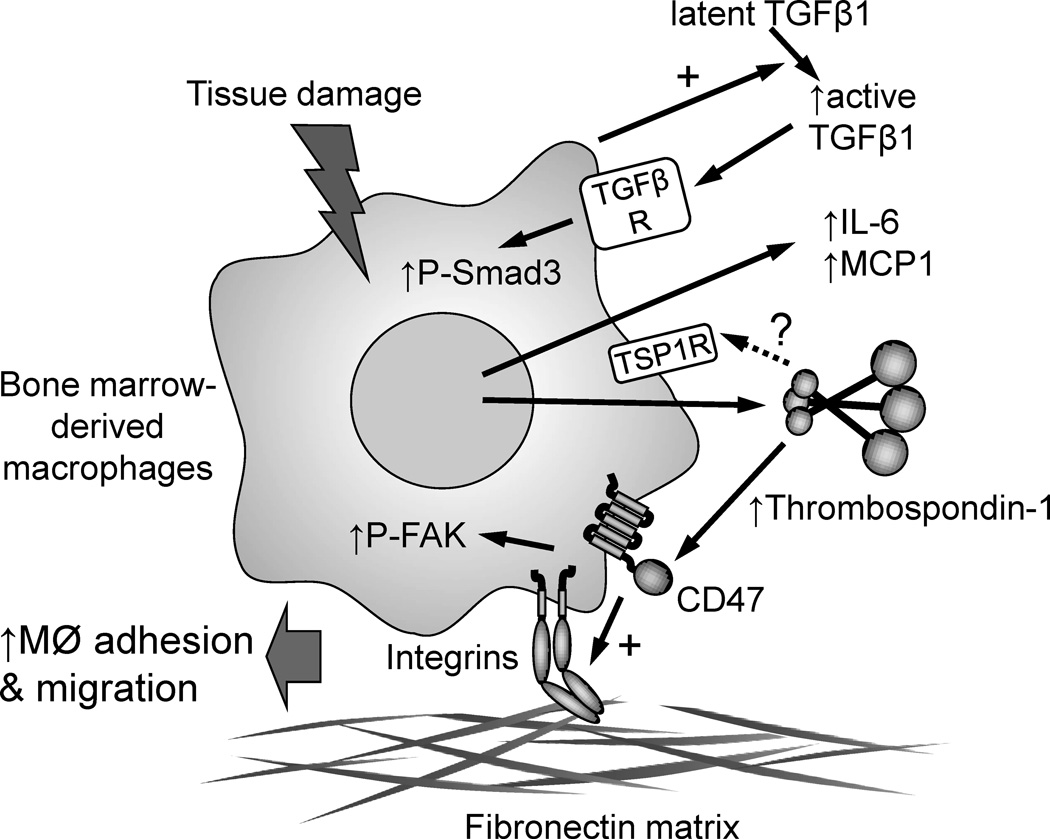Fig. 1.
Proposed role of thrombospondin-1 in promoting abdominal aortic aneurysms. Bone marrow-derived macrophages release thrombospondin-1, inflammatory cytokines, and activate latent TGFβ when exposed to tissue damage in an early aneurysm. Liu et al. show that the increased TGFβ activity and inflammatory cytokine responses are independent of thrombospondin-1, but thrombospondin-1 expression is necessary for macrophage adhesion and macrophage chemotaxis promoted by MCP1. This may be mediated by signaling through the thrombospondin-1 receptor CD47, which activates integrins to mediate macrophage adhesion to extracellular matrix and phosphorylation of focal adhesion kinase (FAK). Additional undefined thrombospondin-1 receptors may also be involved.

